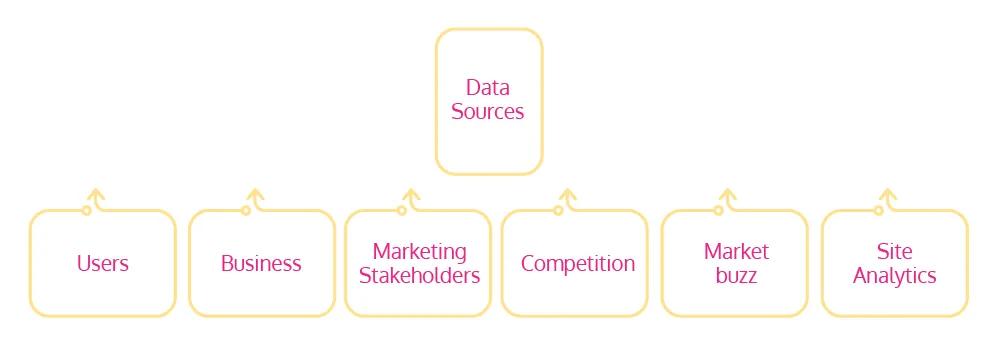

8 UX Design Principles That Ensure Seamless User Experience Of Your Product

User experience increases the chances of customers recommending your product by 16.6%. UX is an art within the boundaries of science that makes business sense and drives ROI for organizaBons. A seamless UX is about providing meaningful and relevant experiences to users in order to increase interacBons and retenBon. It can be created with conBnuous improvement in designs with regards to usability and customer’s perceived quality. There are several recipes one can use to make UX Design a success. These are our top 8 recommendaBons of UX Design principles to create successful experiences.


1. Focus on real users:
The main goal of any business is to make the end customers happy. The first and very essenBal principle of UX design is to focus on real users- their needs, expectaBons, moBvaBons, and frustraBons. A clear understanding of these important user aspects helps designers to build personas, and focus on these personas throughout the design cycle. One can elicit real users’ needs using common user research methods such as interviews, focus groups, contextual inquiry, and shadowing.
2. Focus on business:
For any product to be successful in the industry, the UX design of that product MUST make business sense. Defining your business goals upfront is extremely important. A good UX design creates a great balance between business and user goals. Making the end customers happy while meeBng the business goals will eventually result in ROI for your business.
3. Data-informed design:
Design is great not because it is created by a designer, but when it is informed through mulBple data sources. Designers use data as a source to make effecBve design decisions. Data can be qualitaBve or quanBtaBve in nature. Examples of data © yuj designs pvt. ltd.

sources are users, business and markeBng stakeholders, compeBBon, market buzz, and site analyBcs. The data-informed design will help achieve long-term business as well as user goals and also give users a great experience which will eventually help in user engagement and retenBon.

4. Design for the user’s mental model:
A user’s mental model means the percepBon that a user has in his mind about a parBcular product or service. Once you understand users’ mental models, you can replicate that in your design to give the desired experience, thus making it easy for users to complete their tasks and achieve their goals. Research techniques are used to capture the user’s mental model.
5. Design for Learnability, Memorability, Task Efficiency, and Human Memory:
One of the important UX design principles includes creaBng designs that are easy to learn, create memorable experiences, and make users do their tasks efficiently and effecBvely. The learnability of the design is based on the user’s understanding of the design. Memorability means, when the user returns to it, he or she should be able to remember how to do things, as users are not using the applicaBon all the Bme. Here, user experience plays a crucial role as a differenBator. When the user has decided to do a task on a website or in an app, then he/she should be able to complete it efficiently which is also achieved with the help of great user experience.

6. Validate Designs:
Design validaBon means a detailed evaluaBon and analysis during or at the end of design and development. The goal of validaBng designs is to ensure that the design is able to achieve the set goals. ValidaBon of design helps to improve design decisions and maintain consistency. Typical techniques used for design validaBon are an expert review, cogniBve walkthrough, formaBve and summaBve usability tesBng, and A/B tesBng.
7. Design Consistency:
Consistency is the key principle of UX design. A good user experience should provide a consistent experience. It helps users to get used to the product quickly and reduce the learning Bme. If a user encounters inconsistency, the chances of him returning back to your app are less. Design consistency also includes maintaining a brand voice along with the visual language. Consistency helps businesses build recall value, credibility, and trust in the company.
8. Technology handshake:
Technology is ever-changing, and it is changing businesses with it. Once you have designs that are validated, you need to make sure that whatever you have designed can be handled by the exisBng technology. The interacBons, strategy, and visual design envisioned by the designer has to see the light of the day. That reality is solely possible through a technology handshake.
There are hundreds of UX design principles that apply from a micro to a macro level of design. This blog has aYempted to focus on macro principles that would make your UX efforts successful. Focusing on real users, defining and achieving business goals, designing data-informed designs, coping with the ever-changing technology, validaBng designs by various methods, maintaining consistency, and considering the user’s mental model before designing will result in making the end customers perform their tasks. This will ensure a seamless User Experience.
If you want to create a memorable product experience for your users, we can come up with design strategies that create a staged experience for your users. We as a UX Design Studio will deliver you the value that you truly deserve.Contact us today to see our offerings.
